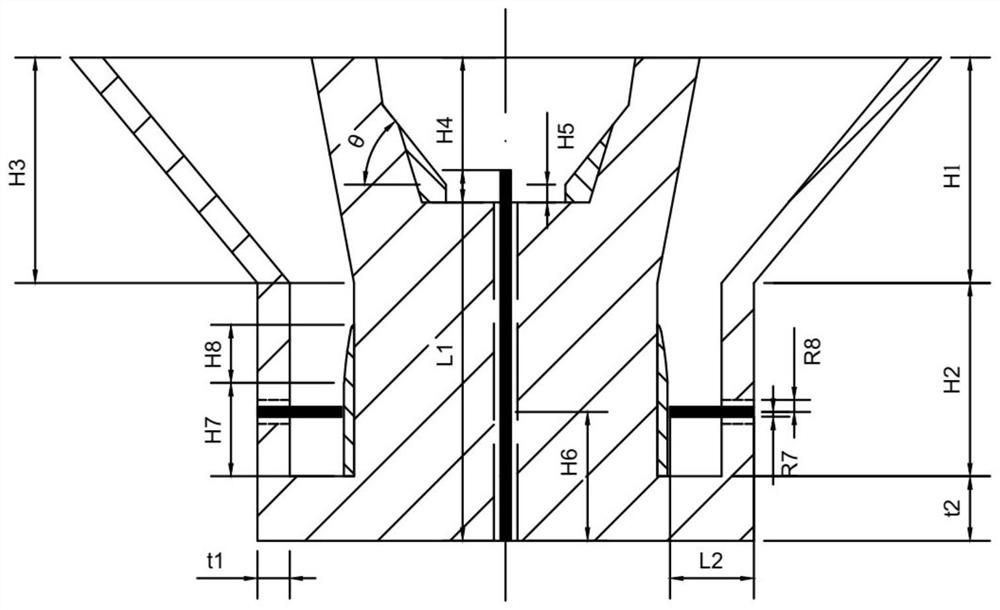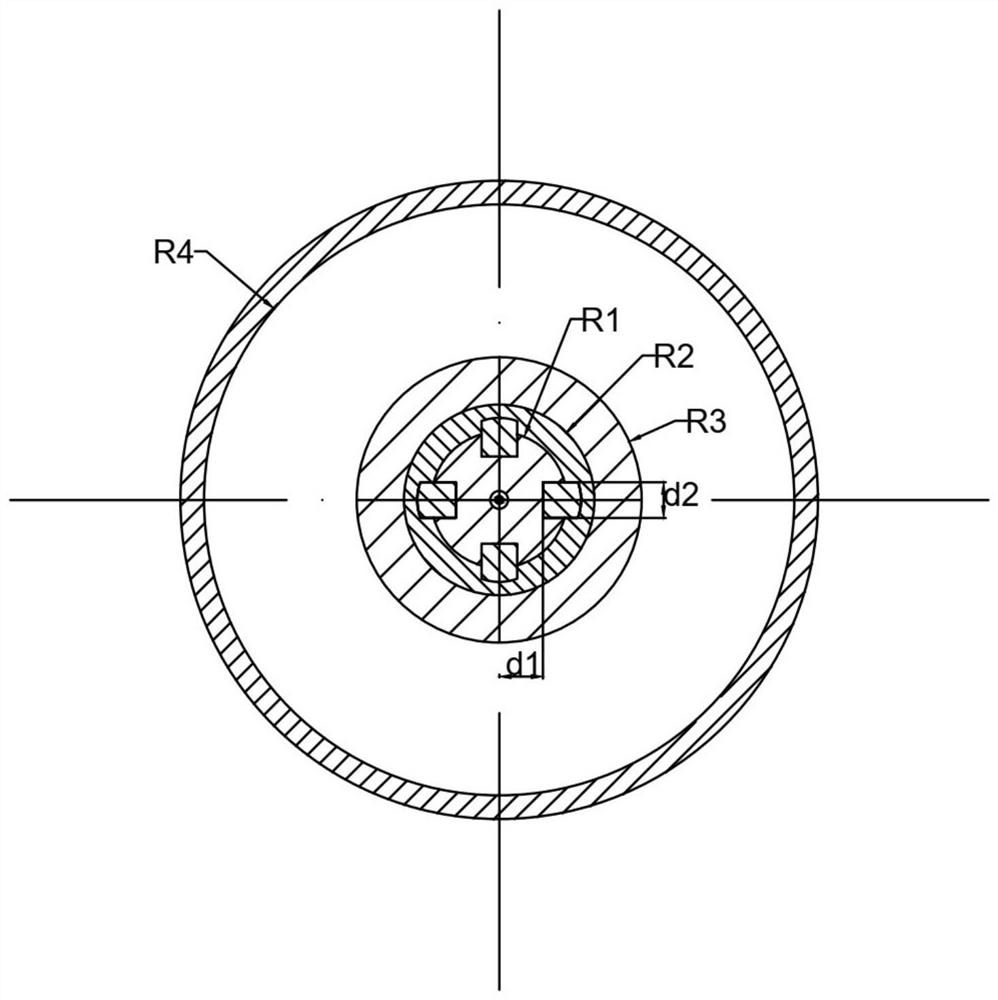Ku/Ka waveband double-frequency conical beam horn antenna
A technology of cone beam and horn antenna, which is applied in the field of Ku/Ka band dual-frequency cone beam horn antenna, can solve the problems of narrow impedance bandwidth, long vertical length of antenna, small size, etc., and achieves wide impedance bandwidth and simple feeding. , compact structure
- Summary
- Abstract
- Description
- Claims
- Application Information
AI Technical Summary
Problems solved by technology
Method used
Image
Examples
Embodiment 1
[0048] like Figure 1-5 As shown, a Ku / Ka band dual-frequency conical beam horn antenna in this embodiment is characterized in that the antenna structure is composed of a dual-frequency radiation part and a feeding part. The dual-frequency radiation part adopts a nested horn structure, the inner structure is a ridged circular waveguide horn with a working frequency band of Ka band, and the outer structure is a ridged coaxial horn, which is used for the radiation of the Ku-band antenna. The Ka-band antenna feed adopts a coaxial probe structure, and the Ku-band antenna feed is realized by connecting a coaxial probe with a one-to-four microstrip power divider.
[0049] Ridged circular waveguide horn works in the whole Ka band, coaxial probe excitation, transmission TM 01 mode, suppressing higher-order modes. According to the Open Circuit Circular WaveguideTM 0m The far-field pattern function of the mode, the transmission mode and the radius R of the opening 2 is also related ...
PUM
| Property | Measurement | Unit |
|---|---|---|
| Radius | aaaaa | aaaaa |
| Width | aaaaa | aaaaa |
| Height | aaaaa | aaaaa |
Abstract
Description
Claims
Application Information
 Login to View More
Login to View More - R&D
- Intellectual Property
- Life Sciences
- Materials
- Tech Scout
- Unparalleled Data Quality
- Higher Quality Content
- 60% Fewer Hallucinations
Browse by: Latest US Patents, China's latest patents, Technical Efficacy Thesaurus, Application Domain, Technology Topic, Popular Technical Reports.
© 2025 PatSnap. All rights reserved.Legal|Privacy policy|Modern Slavery Act Transparency Statement|Sitemap|About US| Contact US: help@patsnap.com



